I recently had the opportunity to be involved with the demolition of the remaining Key Bridge in Baltimore harbor, This was a large-scale effort from the beginning and required help from many companies. It demanded expertise from engineers, crane operators , underwater divers, explosives technicians, and tugboat operators. I myself was involved as the tugboat Captain onboard the Ezra Sol. It was an experience I will never forget. Being up close and personal allowed me to see the magnitude involved with this project.
The first and most important thing was the recovery of 6 men who lost their lives in this tragic event. Right away some of the bodies were recovered, but the daunting task of moving the broken pieces of steel to find the others had to start. The underwater divers and sonar imaging played a major role in this. The last body was found on May 7, 2024, almost six weeks after the collapse. I am so happy that these families have been able to lay their loved ones to rest and get the closure they so much deserved.
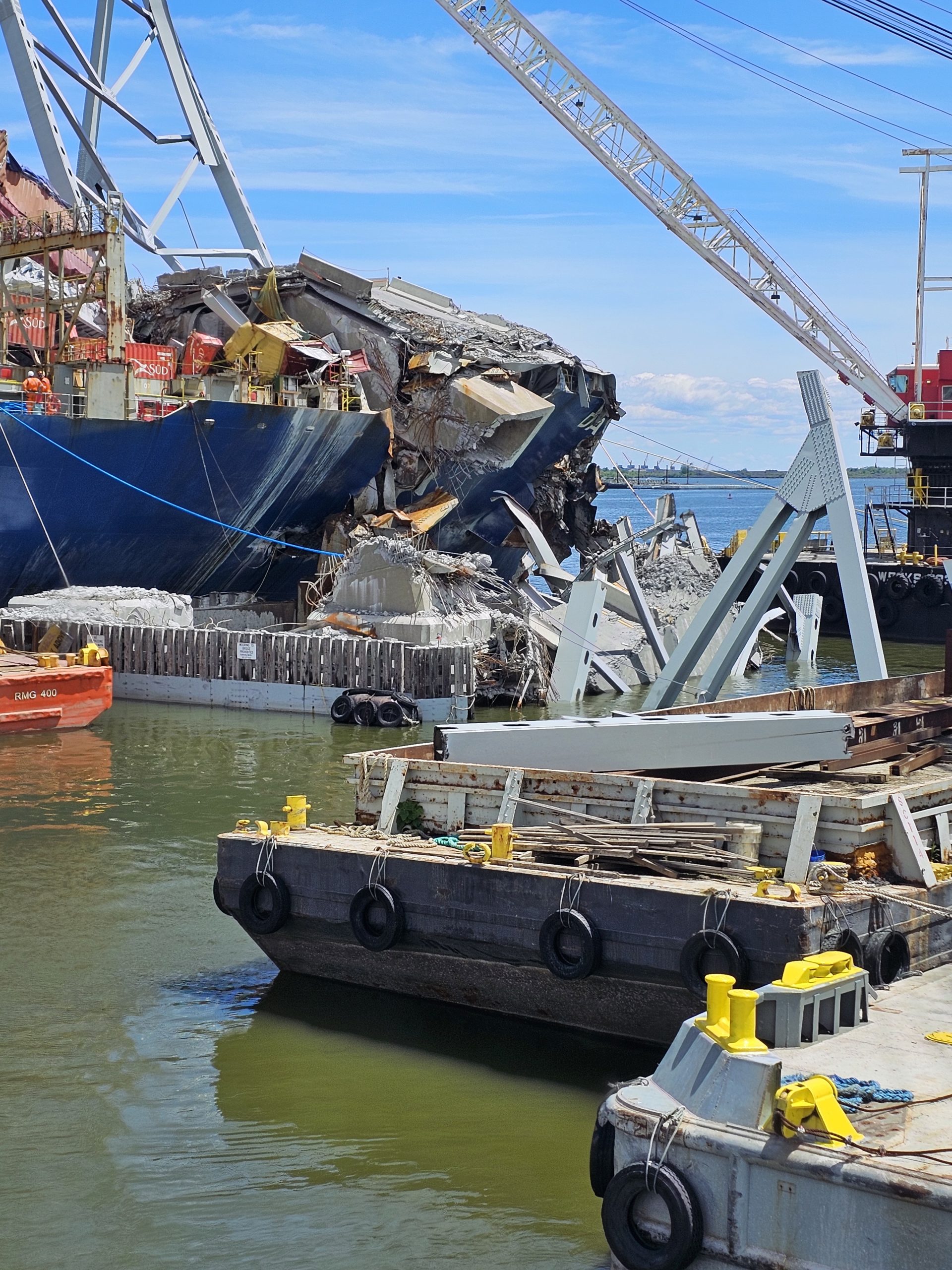
The next step is to get the channel open for shipping to start servicing Baltimore again. The Port of Baltimore is the largest in the U.S. by volume for handling farm and machinery equipment. It also has a large volume of coal being exported. Of course the container shipping is one of the top 20 ports in the U.S. by tonnage and containers handled. Many workers had to stay home on pins and needles worrying about their jobs and when they may get back to work. Many variables and hurdles had to be faced for this to happen.
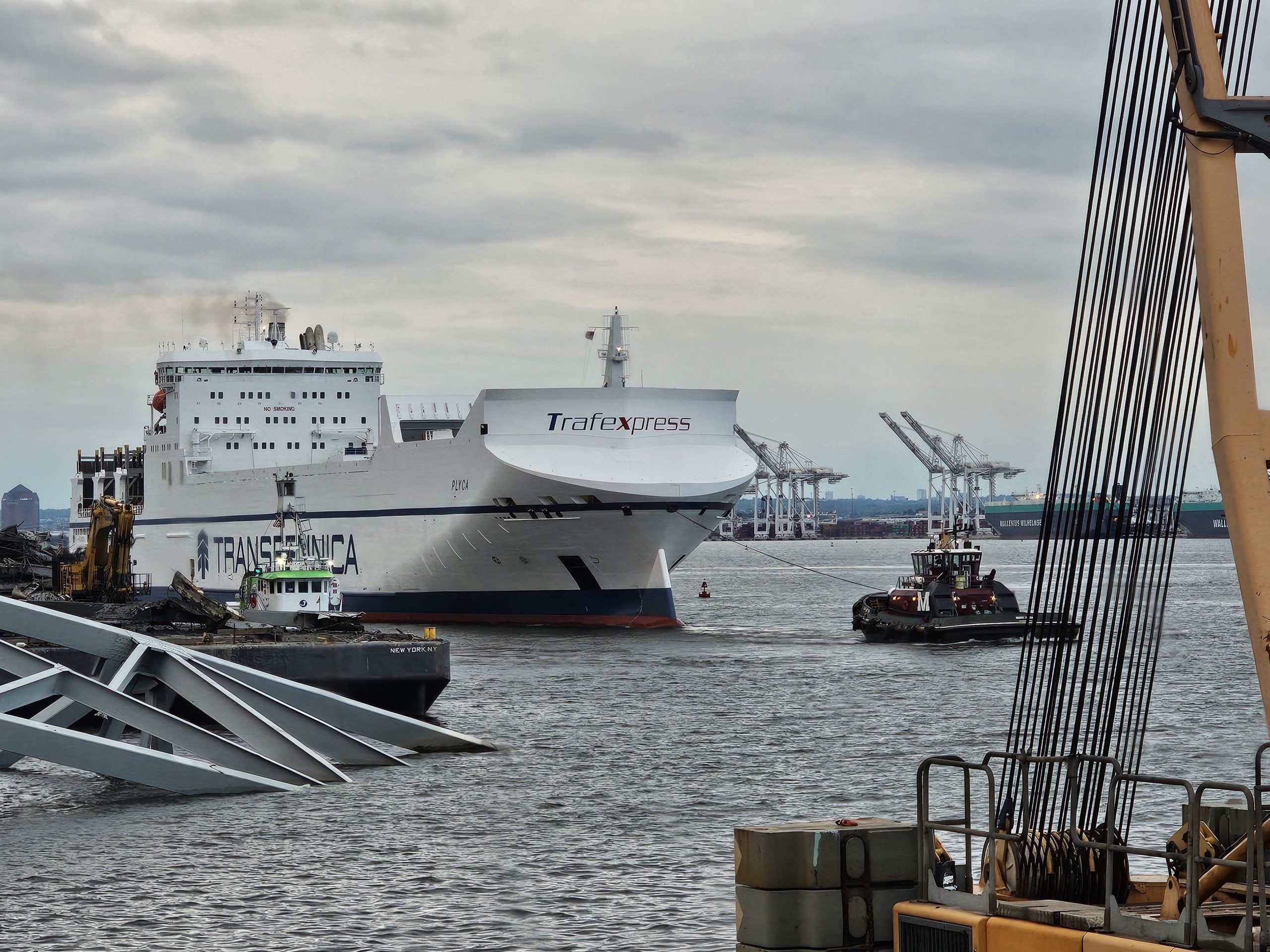
The ACE ( Army Corps of Engineers) and USCG (United States Coast Guard) did an outstanding job of establishing temporary channels for some cargo movements in and out of Baltimore. Buoys were installed to help vessels navigate waters they don’t generally enter. I know this was nerve racking for vessel operators moving through these channels with limited amounts of under keel clearance. I personally experienced this too moving the deck and crane barges around the cleanup site. The USCG also established a security zone around the site and required vessels to check in by VHF radio for movements. The federal channel with 700 feet horizontal clearance and 50 feet depth opened up on June 10, 2024. A total of 3 temporary channels were established before this happened. Each one, a little wider and deeper than the last.
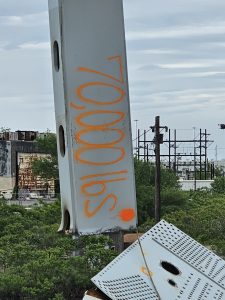
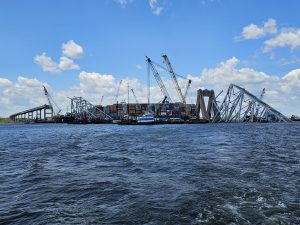
After removing many large pieces of the steel superstructure above the water, efforts were directed at the underwater operations. It takes a dedicated person to go underwater in the darkness to cut away pieces of steel that are under extreme stress loads. The large piece that spanned across the bow of the Dali was strategically injected with small explosion charges to separate it for safe removal from the bow. Keep in mind the Dali was moored with many stern anchors to keep her from shifting. If she was to shift in the slightest amount many lives could have been in jeopardy. Also you have environmental aspects to consider when doing a salvage job this large. Small movements and weight shifts are crucial. Even the mangled containers on the bow had to be removed with precision.
The tugboats made many trips in and out of Trade point Atlantic lay yard at Sparrows Point to bring the pieces in to be cut up. The “Chesapeake 1000” heavy lift crane and the “Big Blue” lift crane did some impressive shifts with very heavy and large pieces hanging in suspension during transit. We had to work up close and personal with the material barges to make it happen. We were as close as 2 feet from the jagged remains jutting up out the water. We were fortunate that the current doesn’t run strong through the Baltimore area. It could have been much harder to position correctly if it did. 3 moorings were used to anchor all the barges until they were needed.
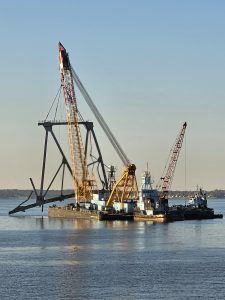
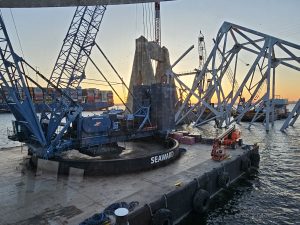
Now that the main channel is open, most of the equipment has left for other work. The remaining demolition and rebuilding will continue to be ongoing for years. I may be back to rebuild it if my company bids for the job. Rumors are the new bridge will probably be a cable suspension type bridge and even more grand than the old one. It needs to not only be a symbol that represents the location where Francis Scott Key wrote the Star Spangled Banner, but also a symbol of resilience and strength when we all come together in times of need. I hope that there will be a monument of some sort to reflect the lives of the men lost , and a timeline from collapse to rebuild.
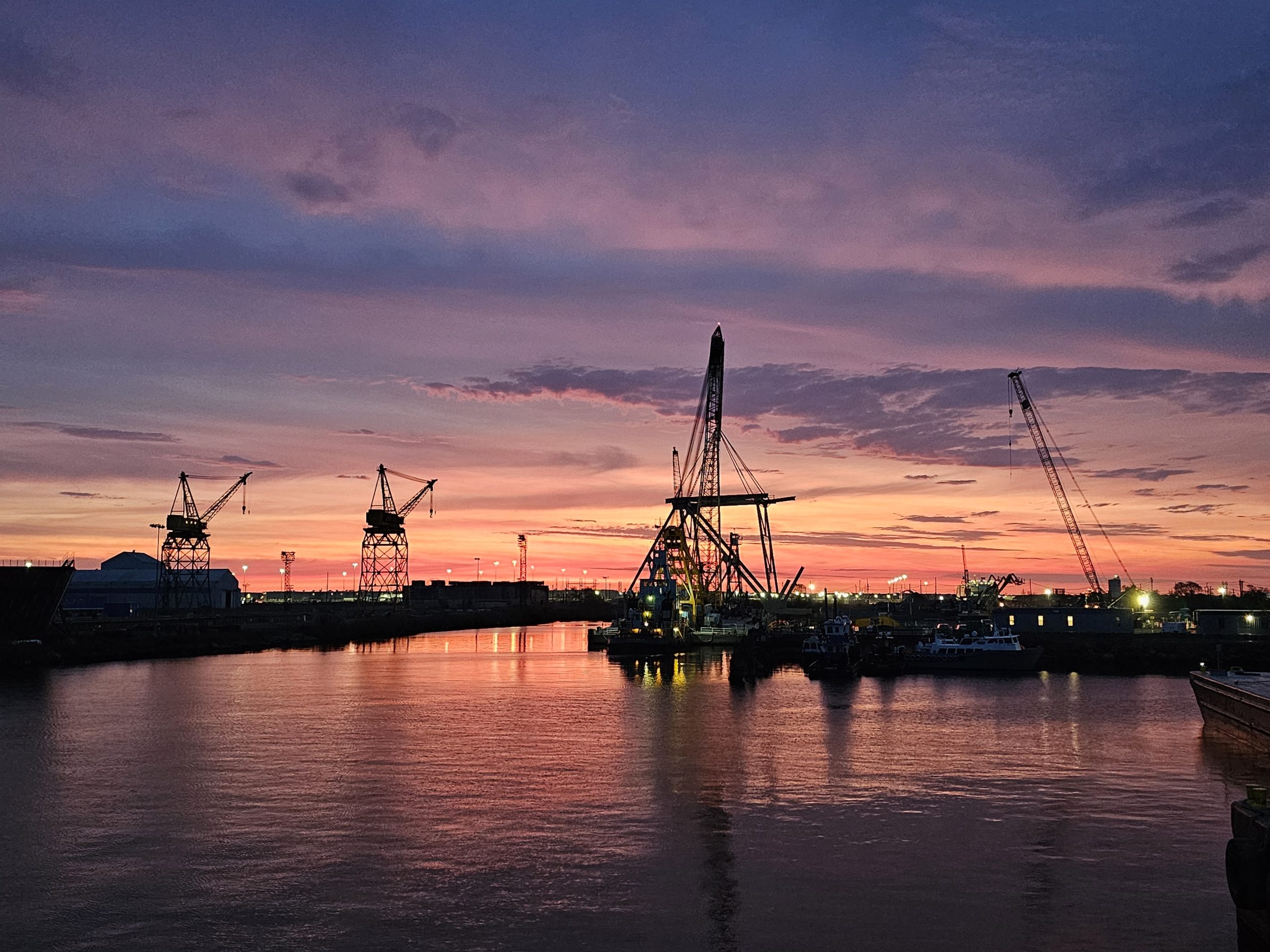
I have made many trips in and out of Baltimore harbor in my 34 years on the water. Never in my wildest dreams did I ever think something like this could happen. I have heard many different stories of what went wrong. The bottom line is when you lose power you cannot steer a vessel. Dropping anchor isn’t really going to stop that size vessel with the speed she was making. You have to be on the bow to drop anchor, so imagine being the crew member tasked with that as the bridge is getting closer. My instinct would be to turn and run hard!! I am looking forward to reading the case study on this when I go to my next bridge resource class.

Baltimore, Maryland, USA – 03/26/2024: Aerial 180 degree photo panorama of the Francis Scott Key Bridge in early morning.
This tragedy shows just how fast something so catastrophic can happen. Basically in the blink of an eye the bridge went down like Jenga blocks. Whether it’s human or mechanical error, always be prepared for the worst. Be responsible and use good judgement in all things you do.

